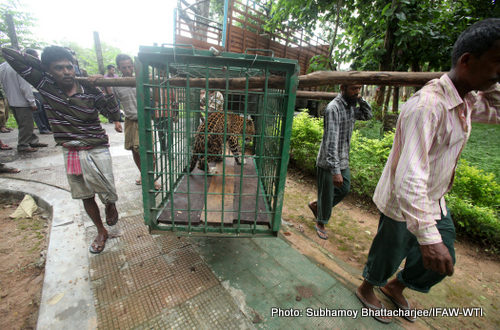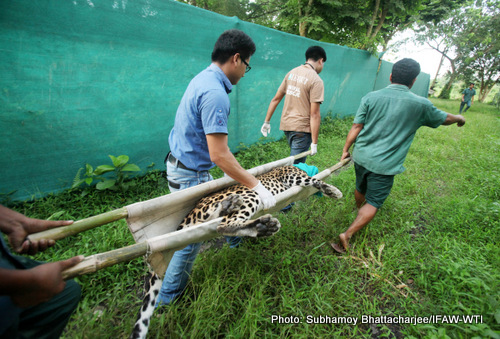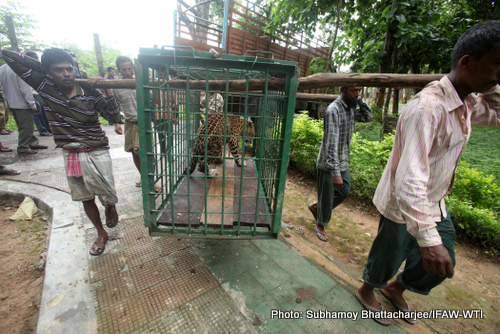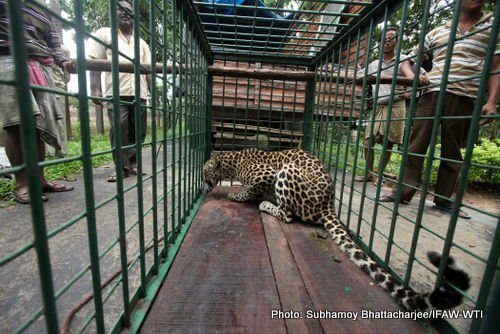Two Hand-Raised Leopards Shifted to Sipahijala Zoological Park
Agartala, June 25, 2015: Two leopards hand-raised at the IFAW-WTI run Centre for Wildlife Rehabilitation and Conservation (CWRC) were shifted to Sipahijala Zoological Park in Tripura for lifetime care on June 25, 2015. The Sipahijala Zoological Park authorities had requested CWRC to handover these leopards for lifetime care. After much deliberation, the decision was made to shift the male and the female leopard to Tripura.
Shiva, the male leopard, was rescued by the forest staff from Sivasagar Tea Estate on December 30, 2002, whereas Mariani, the female leopard, was rescued from a human habitation by the locals and forest officials on April 20, 2010. Both these leopards were about six-month-old when they were admitted to CWRC.
Following the protocols of hand-raising leopard cubs, the team of veterinarians and animal keepers have tended to these cubs over the years at the large animal enclosure in CWRC. Due to high prevalence of human-leopard conflict in Assam, these two animals could not be released back into the wild.
On June 22, the two animals were sedated and put in specialised transportation cages by a team of CWRC veterinarians. The team started their journey for Tripura in the wee hours of June 23 and travelled via Tezpur NH-52 to reach Agartala covering 700 kms in 42 hours.
The team that accompanied the two big cats included CWRC veterinarian, Dr Bishwajit Boruah; Dr Sanjay Gohain from College of Veterinary Science; Hareswar Das, animal keeper at CWRC; and Subhamoy Bhattacharjee, IFAW-WTI’s communications officer. They ensured that the animals were not under any kind of stress during the long journey.
The convoy reached the Sipahijala Zoological Park at 10 pm on June 24, 2015. Thereafter, the animals were kept under observation overnight by the administrative and veterinary team of the zoo, led by Mr KG Roy, Director, Sipahijala Zoological Park.
Next morning on June 25, Dr SK Bhowmick, Veterinary In-Charge of Sipahijala Zoological Park, along with his team, shifted the two leopards in a quarantine facility where they would be kept for observation.












